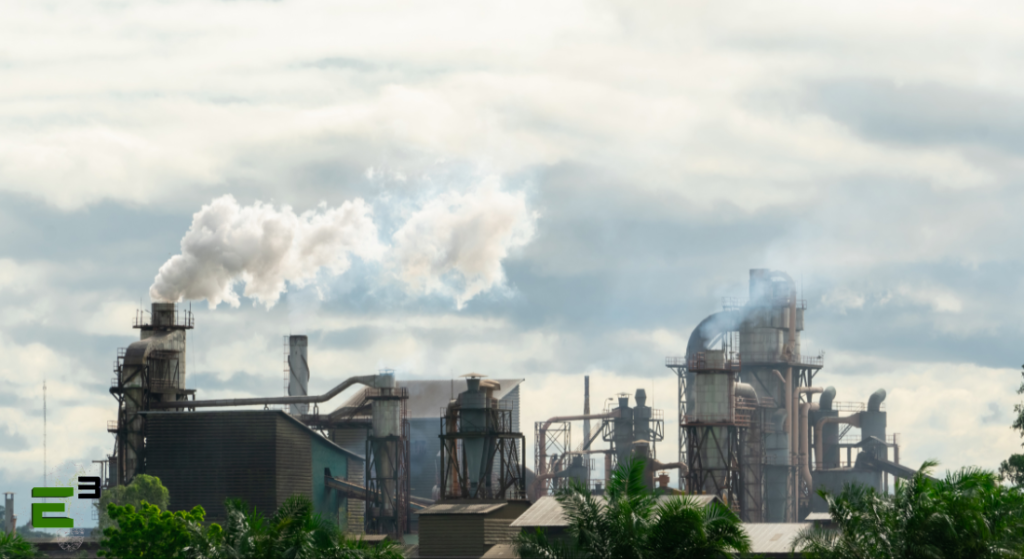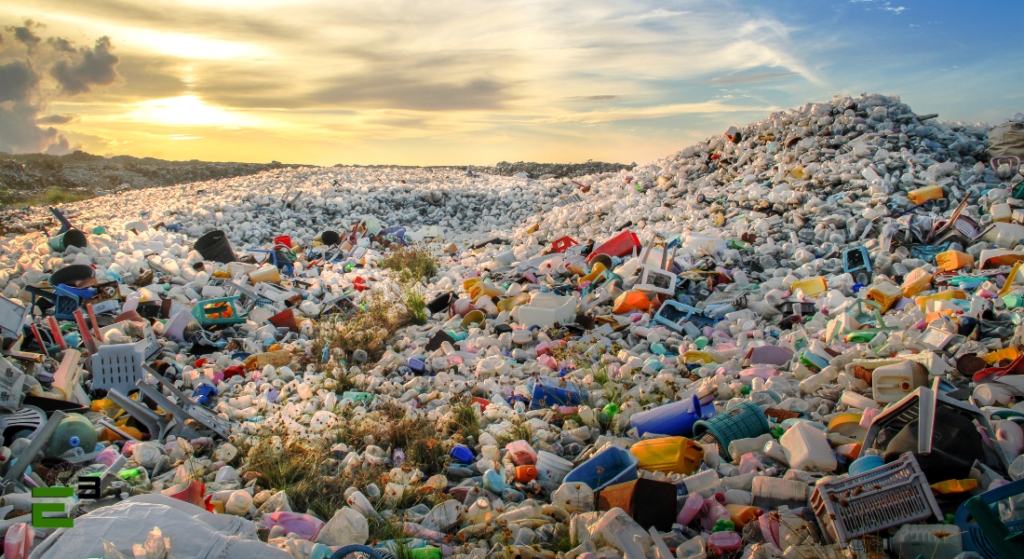The connection between human actions and the environment has become a focal point in contemporary discussions, driven by the growing awareness of the negative impacts of certain practices on our ecosystem. As we closely examine the environmental challenges we face, it is crucial to identify practices that significantly harm the environment to guide effective preservation and restoration efforts. In this context, we highlight three practices that emerge as major drivers of environmental degradation: deforestation, greenhouse gas emissions, and plastic pollution. These not only pose tangible threats to biodiversity and ecosystem health but also contribute to climate change, compromising the fundamental balance of our planet. By understanding the magnitude of these challenges, we are better equipped to seek solutions and adopt more sustainable practices that preserve the health and vitality of the environment for future generations.
Top 1 – Greenhouse Gas Emissions (GHG)

Impact Estimate: Approximately 60-70% The burning of fossil fuels, such as coal, oil, and natural gas, for energy and transportation stands as the primary source of greenhouse gas (GHG) emissions. These emissions make a substantial contribution to climate change, resulting in extreme weather events, rising sea levels, and adverse impacts on human and environmental health.
The estimated impact of 60-70% underscores the significant role that the combustion of fossil fuels plays in the release of greenhouse gases into the atmosphere. These gases, including carbon dioxide (CO2), methane (CH4), and nitrous oxide (N2O), trap heat in the Earth’s atmosphere, leading to a gradual warming known as the greenhouse effect. The consequences of intensified greenhouse gas emissions are profound and have far-reaching implications for the planet.
The correlation between GHG emissions and climate change is evident in the increasing frequency and severity of extreme weather events, such as hurricanes, droughts, and wildfires. Additionally, the melting of polar ice caps and glaciers contributes to rising sea levels, posing threats to coastal communities and ecosystems. Beyond environmental impacts, the health of both human populations and ecosystems is jeopardized by shifts in climate patterns, affecting water and food security.
Addressing the challenge of GHG emissions requires a transition to sustainable energy sources, increased energy efficiency, and global cooperation to reduce reliance on fossil fuels. Initiatives such as renewable energy adoption, afforestation, and carbon capture technologies play a vital role in mitigating the impact of greenhouse gas emissions and fostering a more sustainable and resilient future.
Top 2 – Deforestation

Impact Estimate: Approximately 20-25% Deforestation, often associated with agricultural expansion and logging, stands as a destructive practice that annihilates valuable ecosystems, contributing to biodiversity loss, the release of substantial carbon into the atmosphere, and the alteration of regional climate patterns.
Deforestation, estimated to have an impact ranging from 20% to 25%, is a pervasive and alarming environmental threat with far-reaching consequences. This detrimental activity not only results in the irreversible destruction of precious ecosystems but also triggers a cascade of negative effects on the global environment.
Biodiversity loss is one of the most alarming ramifications of deforestation. As forests are cleared, vital habitats are destroyed, leading to the extinction of species and disruption of delicate ecological balances. Additionally, deforestation significantly contributes to the emission of large amounts of carbon into the atmosphere. Trees play a crucial role in regulating climate by absorbing carbon dioxide during photosynthesis. When they are removed, this carbon is released, exacerbating the issues of global warming and climate change.
Top 3 – Plastic Pollution

Impact Estimate: Approximately 10-15% Inadequate disposal of plastics and the mass production of these materials have resulted in widespread pollution of oceans, soils, and terrestrial ecosystems. Plastic pollution poses a severe threat to marine life, contaminates water resources, and contributes to human health issues.
The estimated impact of 10-15% underscores the pervasive and detrimental nature of plastic pollution, highlighting its significant role in environmental degradation. Improper disposal, coupled with the durability of plastic, has led to vast accumulations in natural environments, with marine ecosystems being particularly affected.
Plastic pollution in oceans is particularly alarming, where discarded plastic items break down into smaller particles known as microplastics. These microplastics infiltrate marine life, from tiny organisms to large mammals, disrupting ecosystems and endangering species. Additionally, plastics leach harmful chemicals into the water, further compromising the health of aquatic environments.
On land, plastic pollution affects soils, harming plant life and the organisms that depend on healthy soil ecosystems. The longevity of plastics exacerbates these issues, as they persist in the environment for hundreds of years, causing long-term harm.
The consequences of plastic pollution extend to human health, with plastic particles entering the food chain through contaminated water and marine organisms. These particles may contain toxins that pose risks to human health, making the issue not only an environmental concern but also a public health challenge.
Addressing plastic pollution requires a multifaceted approach, including reducing plastic production, improving waste management systems, and promoting the use of alternative, biodegradable materials. Global awareness and collaborative efforts are essential to mitigate the impact of plastic pollution and safeguard the health of both ecosystems and human communities.
How to avoid destroying the environment
Avoiding detrimental environmental practices requires a concerted effort to adopt sustainable alternatives and conscientious decision-making. To combat deforestation, supporting sustainable land management practices, endorsing responsible logging, and championing reforestation initiatives are imperative. Additionally, promoting consumer awareness about the origin of wood products and choosing certified sustainable options can discourage deforestation.
Mitigating greenhouse gas emissions necessitates a shift towards renewable energy sources, enhanced energy efficiency, and a reduction in fossil fuel reliance. Governments and industries should prioritize policies and investments in clean energy technologies, incentivizing their adoption on a global scale. Individuals can contribute by embracing energy-efficient practices, using public transportation, and advocating for policies that curb emissions.
Addressing plastic pollution involves reducing single-use plastics, promoting recycling and waste management education, and advocating for policies that limit plastic production and encourage eco-friendly alternatives. Consumers can make a significant impact by choosing reusable items, participating in community clean-up initiatives, and supporting businesses committed to reducing plastic usage.
Ultimately, a comprehensive strategy involves raising awareness, fostering sustainable practices, and advocating for policy changes at local and global levels. By collectively embracing these actions, individuals, communities, and nations can contribute to a more sustainable and environmentally conscious future.
Addressing environmental challenges demands a united commitment to sustainable practices. By combating deforestation, reducing greenhouse gas emissions, and curbing plastic pollution through conscious choices, individuals and societies can play a vital role in preserving the health of our planet.
The path to a sustainable future lies in global cooperation, responsible resource management, and a shared dedication to safeguarding the delicate balance of our ecosystems for generations to come.



